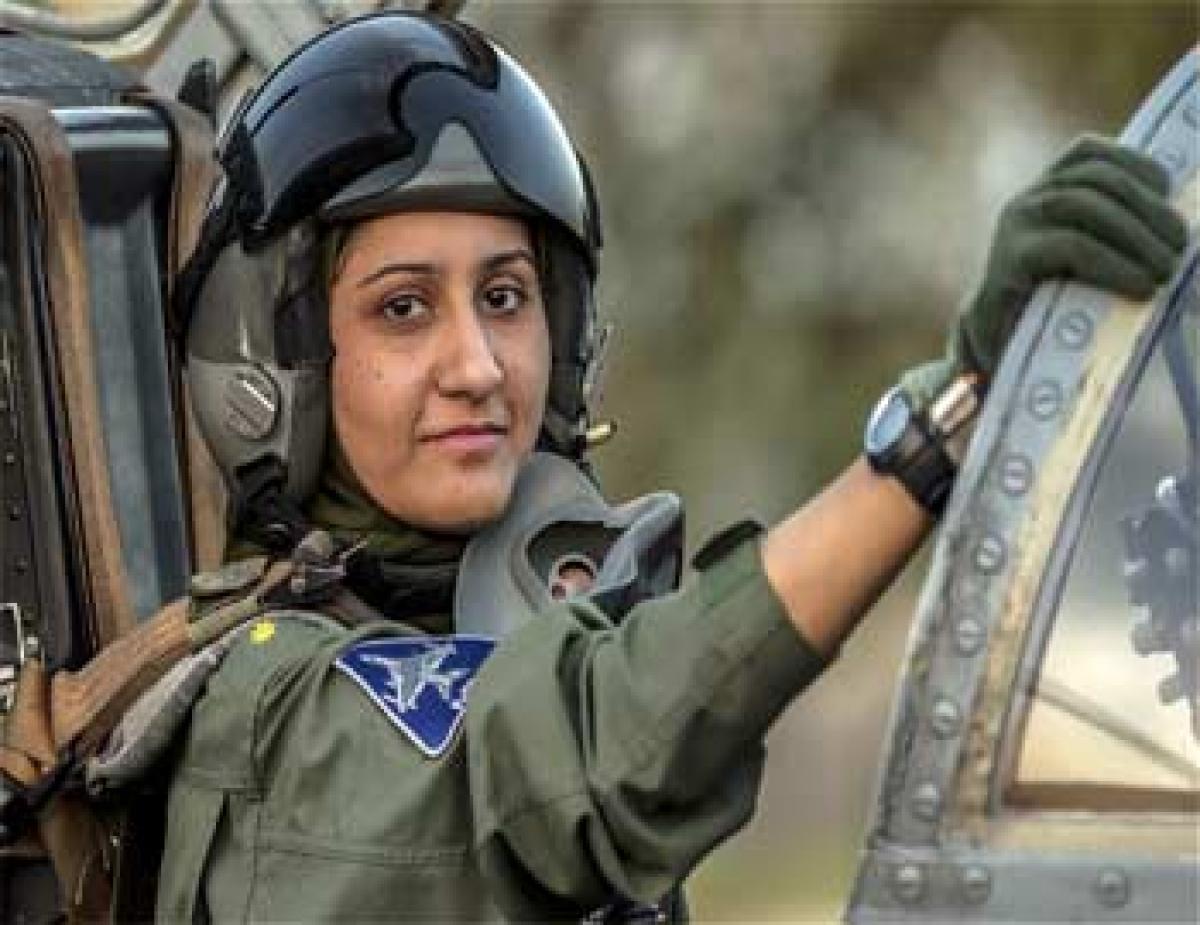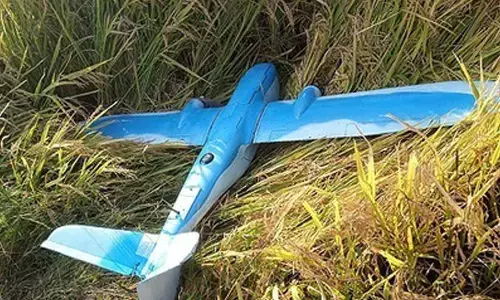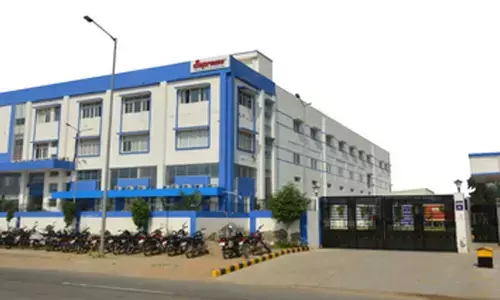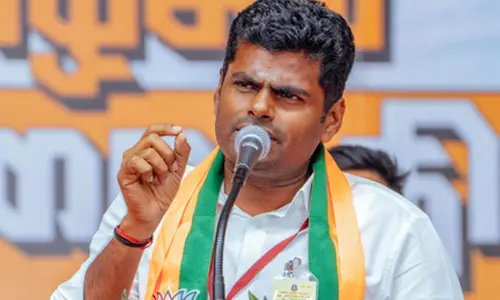An expedition to touch the sky with glory

Air Force Day Special: An Expedition to Touch The Sky With Glory. Indian Air Force is the decisive sharing out of the Indian Armed Forces – the military forces of the Republic of India. It is the youngest service among the tri-services, when compared to the Indian Army and the Indian Navy.
Indian Air Force is the decisive sharing out of the Indian Armed Forces – the military forces of the Republic of India. It is the youngest service among the tri-services, when compared to the Indian Army and the Indian Navy. Nevertheless, as far as the mightiness is taken into account, IAF unquestionably outshines the other two services.

The Journey
Way back to history - it was on the same day in 1932 - Indian Air Force was officially established as an auxiliary air force of the British Empire. With an infinitesimal strength of 25 air warriors, the first aircraft squadron had come into force on April 01, 1933. During the World War II, the IAF played a dominant role in blocking the encroachment of the Japanese army in Burma, where its first air strike was on the Japanese military base in Arakan. The IAF was actively involved in many vital manoeuvres such as strikes, close air support, aerial scouting, bomber escort and path finding missions for Royal Air Force (RAF) and United States Army Air Force (USAAF) Heavy bombers. During these operations, RAF pilots were embedded in IAF units and vice versa to gain combat experience. Consequently, the IAF pilots participated in air operations in Europe as part of the RAF.
During the war, the IAF passed through a juncture of strapping development. In recognition of the services rendered by the Indian Air Force, King George VI conferred the prefix Royal in 1945. From then on, the Indian Air Force was referred to as Royal Indian Air Force (RIAF), for quite sometime. No sooner India became a republic in 1950 than the prefix was slumped and it slipped back to Indian Air Force. Thereafter, Indian Air Force continued with the same name, abbreviated suitably as the IAF.
.jpg)
Operations undertaken by the IAF at the moment
Indian Air Force, whose motto is Nabhah sprśam dīptam (which literally means “Touch the Sky with Glory”), is celebrating the 82nd anniversary - today. Since independence, Air Force in India has been involved in four wars with adjoining Pakistan and one with the People's Republic of China. Worth mentioning here is the fact that India triumphed in every war with great sensitivity. Other major operations undertaken by the IAF include Operation Vijay, the invasion of Goa, Operation Meghdoot, Operation Cactus and Operation Poomalai and Operation Safed Sagar. The IAF is just not cramped to conflicts rather it has been an active participant in various United Nation’s peacekeeping missions.
Indian Air Force today is a modern, technology-intensive force equipped with a wide collection of modern aircraft and support equipment, communication equipment, detection systems and weapon systems. With striking capabilities of both offensive and defensive, the IAF has full-grown to the echelon of second to none. The IAF is hovering at the doorsill of a new idea of modernisation in keeping with the new security challenges faced by the nation.
Air-superiority fighters, multi-role combat & strike, air defence, reconnaissance aircrafts and Surface to Air Guided Weapon System (SAGW) are the backbone of the IAF. The IAF believes in preclusion during peace and force outcrop during war. In addition to peacetime training for traditional wartime roles, the Indian Air Force also provides significant aid to civil authorities during natural calamities and internal disturbances.
The IAF has served India with guts and efficiency in peacetime and war. It forms the core of national defence and hence contributes towards the stability and security of the region. The IAF has claimed a world aviation record by airlifting amass of civilians in 2,140 missions during the 15-day Operation Raahat to rescue victims of flicker floods in Uttarakhand.
Soon after the conclusion of the first phase of Operation Raahat, the IAF averred that it was the biggest helicopter-borne rescue operation of airlifting victims at peace time anywhere in the world. But, the sad part of the episode is - the operation was also marred by a tragic accident involving a Mif-17V5 helicopter, in which the 20 people on board were killed.
.jpg)
Aerospace safety practices in IAF
Aerospace safety in the IAF is dyed-in-the-wool towards upbeat hazard identification and effective risk management. Effectively, all the preventable and repeated mistakes are addressed through methodical and perfect analysis of previous accidents. Thorough knowledge imbibing of existing orders, instructions and by following standard operating procedures, aerospace safety is accomplished to convinced extent. Also, by gauging the efficiency of the safety system and through regular audits carried out for assessing compliance to correct practices and institution of proactive corrective measures, much could be accomplished.
.jpg)
Core values of the IAF
The core values followed by the IAF make Indian Air Force what it is. Without following these core values, the IAF could have never been so successful. These are the values that instil confidence, earn lasting respect, and create willing followers. They strengthen mental and physical courage when an air warrior enters combat. In quintessence, they are the three pillars of professionalism that lay the foundation for armed forces leadership at every level.
There is no doubt that the IAF has conventionally had a very strong value system. In accordance with the changing times and further improvement in work culture, the IAF has singled out three core values that governs whatever an air warrior does, be it in peace or war or at work and in their personal lives. The three core values are - Mission, Integrity and Excellence. Of course, there is no need to mention that each and every air warrior follows them in letter and spirit.

The IAF achieves the objectives through these core values by:
- Giving confidence to frank and free communication on the concept across the IAF;
- Monitoring feedback and instituting corrective mechanisms;
- Consistently rewarding those who achieve high standards of integrity, excellence and mission accomplishment;
- Punishing those who violate Core Values.
Also, there exists a well deliberated underlying principle behind these core values. Firstly, these core values tell every air warrior what they mean being an Indian and belong to Indian Air Force. Secondly, the core values point to what is universal and unchanging in the profession of arms. Finally, the core values enable to set the ethical climate in the IAF.
.jpg)
Legendaries of the IAF
Some men are born to greatness. Others carve their part in it. It’s only a few people who make the nation proud. Without remembering the legendaries of the IAF who paved the way to India’s tryst with destiny and laid the foundation of Indian Air Force victory in the process, the expedition of the IAF to touch the sky with glory remains incomplete.
The first air warrior to be mentioned in this milieu is Fg Offr Nirmal Jit Singh Sekhon. During the 1971 Operations, Fg Offr Sekhon detrimentally succeeded in damaging of two of the enemy aircrafts. In the fight that followed, at tree top height, his aircraft crashed and he was killed. In thus, sacrificing himself for the defence of Srinagar, Flying Officer Sekhon achieved his object, for the enemy aircraft fled from the scene of the battle without pressing home their attack against the town and the airfield. The awe-inspiring heroism, supreme valour, flying skill and determination, above and beyond the call of duty, displayed by Flying Officer Sekhon in the face of certain death, set new heights of Air Force traditions. Posthumously, Nirmal Singh was conferred with Param Vir Chakra, India’s highest military honour, for his highest degree of courage and altruism in the presence of the enemy.
Second to mention in this regard is – the living legend - Marshal of the Indian Air Force Arjan Singh. He was a pilot who grew up in the annals of the IAF as the first chief for leading the force into the war. He was the Chief of Air Staff when the IAF saw achievement in its first combat of the modern warfare in 1965. Arjan Singh was coveted with Padma Vibhushan for his leadership of the IAF. In recognition of his services, the Government of India conferred the rank of the Marshal of the Air Force onto Arjan Singh in January 2002. Thus Arjan Singh became the first Marshal of the Indian Air Force.
More to mention in the list of the legendaries of IAF are - AM Subroto MMukherjee; ACM PC Lal, Air Cmde Mehar Singh and AVM Harjinder Singh. Of course, the list ever remains inconclusive!
.jpg)
Before wrapping up…
Plurality is the nature of India – so is with Indian Air Force. People from different regions, languages, cultures and heritage get together for the only objective – safeguarding the Indian skies. Yes, the success of Indian Air Force lies in the unity of air warriors. Every individual in general - and the nation as a whole - can draw inspiration from the IAF.
The diligent efforts put in by the Indian Armed Forces make us settle secured. They strive round the clock to safeguard our boundaries, skies and oceans. The result is of course, conspicuous to all. Every individual of this nation could draw inspiration and adopt the following specific qualities abundant in any soldier.
- The value of discipline and punctuality
- A thirst for adventure
- Fortitude to achieve definite objectives
- Realising the strength of Unity
- The power of true friendship
- Patriotic zeal
- Sacrifice for a purpose
- High standards of professionalism
- Maintaining one’s own integrity and preaching the same
- Positive attitude at all times
- Dependability in times of dire need
Jai Jawan Jai Kisan was a popular slogan given to India by the then Prime Minister of India Lal Bahadur Shastri, in 1965, at a public gathering at Ramlila Maidan in New Delhi. The importance of soldiers and farmers was symbolised in this way to the nation. Nevertheless, both the farmers and the soldiers are remembered only during the crisis and calamities. At least - on the occasion of the 82nd anniversary of the IAF’s, let us all remember the sacrifices of martyrs and wish the IAF a great success in each and every endeavour. Jai Hind!!
.jpg)














